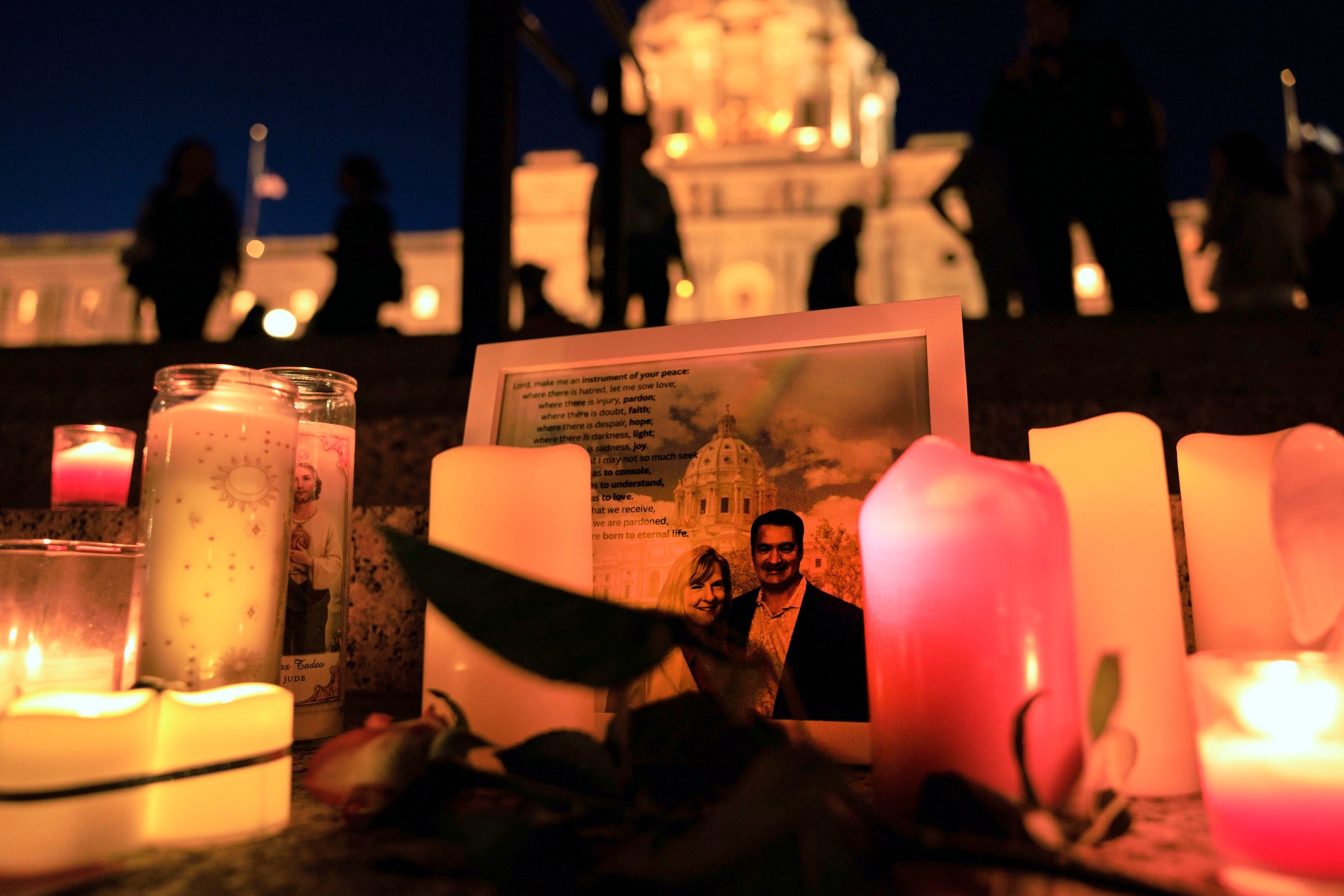As Jacksonville mourns, details of Saturday’s racist rampage at a Dollar General reveal how gaps in American gun laws make it easy for extremists to get firearms. The gunman, an avowed white supremacist, is by our count at least the sixth perpetrator of a high-profile racist shooting in the past decade who acquired his weapons legally.
In the majority of states, including Florida, the only barrier to gun access is a two-minute criminal background check that weeds out people with convictions — but not a history of racist behavior. Only one state reviews gun buyers’ social media accounts as part of a background check — New York — and that’s because of a law passed after 10 people were killed in a racist mass shooting in Buffalo last year.
This yawning gap persists at a critical time. Over the past decade, guns have surpassed explosives as the weapon of choice for domestic terrorists, with shootings accounting for 75 percent of killings by far-right or anti-Semitic extremists, according to a 2022 report from the Anti-Defamation League. And racists use firearms as a tool of intimidation as well as physical harm: According to one estimate, guns are used in various forms of hate crimes 20 times per day.
What To Know Today
The victims of the Jacksonville shooting have been identified: Anolt Laguerre, Jr., 19, was a Dollar General employee who was killed while trying to flee the store. Jerrald De’Shaun Gallion, 29, was slain while shopping with his girlfriend, who was able to escape. He leaves behind a 4-year-old daughter. Angela Carr, 52, was an Uber driver who’d just dropped someone off at the store when she was shot to death in her car. [USA Today]
A shooting at UNC Chapel Hill claimed the life of a faculty member and sparked a two-hour manhunt that put the university and surrounding area on lockdown. Gunshots rang out in the chemistry building at around 1 p.m on Monday. A graduate student was arrested. An exchange student from Denmark spoke about what it was like to endure a harrowing yet familiar American ritual: “This never happens where I’m from. It was intense. But I was a little surprised that other people weren’t panicking that much.” Context: In 2019, six people were shot, two of them fatally, at UNC Charlotte. [Associated Press]
Gun sales are stabilizing after their post-pandemic drop. Americans bought more than 40 million firearms in 2020 and 2021, with sales returning to pre-pandemic levels (16.4 million) in 2022. Financial analysts say that gun companies are reacting to this new normal by adjusting production levels, embracing new technologies, and marketing to consumers who aren’t “old, male and pale,” as one gun industry lobbyist put it. But gunmakers appear ready to ramp up production in the event of an election-related surge in sales. Context: At least 22.5 million guns were produced for the American market in 2021, an all-time high, we reported earlier this month. [CNBC/The Trace]
Republican support for new gun restrictions is down 17 percent since last year, according to a new AP-NORC poll. In July 2022, shortly after President Biden signed the Bipartisan Safer Communities Act, GOP support for new gun laws was at 49 percent; earlier this month it was 32 percent. Independents’ support dropped too, to 61 percent down from 72 percent last summer. Overall, nearly two-thirds of American adults said gun laws should be stricter. [Associated Press]
There have been at least 11 shootings at high school football games so far this school year, according to one estimate. K-12 School Shooting Database, which tracks campus gunfire, has tallied shootings and shots-fired incidents at games in California, Georgia, South Carolina, and Virginia, among others, as well as a mass shooting at a football game in Oklahoma. “At least 7 police officers were working” that game “when 4 people were shot in the stands,” the organization noted. Context: There are only a handful of documented cases in which an armed security guard or stationed police officer has stopped a school shooting. [Twitter/The Trace]
Crime gun tracing is still hampered by inadequate technology, according to a new report from the ATF’s National Tracing Center in Martinsburg, West Virginia: “The 900 million records held at the ATF, plus the millions still sent in each month by sellers who go out of business, must be converted into static images and pulled up by hand because a 1986 law bars the ATF from creating a searchable database for its gun records. The agency … now sits on an 18-month backlog of documents needing to be processed.” [Star Tribune]
New York City Police are stopping pedestrians of color at a far higher rate than white pedestrians, according to data from the New York Civil Liberties Union. Of the 8,502 people stopped, questioned, and possibly frisked by the NYPD in the first half of 2023, only 5 percent were white. While 40 percent of the white pedestrians were arrested, 72 percent of the Black and Latino pedestrians were let go. Stop-and-frisk policing, which purportedly aims to nab illegal gun possessors, was ruled unconstitutional in 2013. [Gothamist]
Archive
What Do Guns Mean to Extremists? Some far-right groups use gun rights as an organizing principle, while others see firearms more as a means to an end, extremism expert Mark Pitcavage told us. (June 2022)
